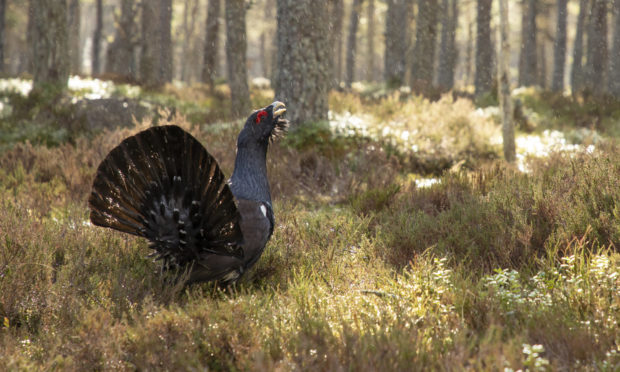The UK’s first community-led capercaillie conservation strategy is being discussed in an effort to help save the endangered species.
There are now fewer than 1,000 capercaillie left in Scotland, with the equivalent of one being lost every day for the last 40 years.
Around 80 per cent of the birds are to be found in Strathspey and local action is seen as critical to preventing their extinction in the UK.
To that end, the Carrbridge Capercaillie Conservation Strategy has been published and is now out for consultation, with residents having the chance to be at the forefront of efforts to save the species.
The consultation, which is open until July 31, has been delayed due to the pandemic and the Carrbridge Capercaillie Group (CCG) is keen to support a wider project across the Cairngorms National Park, for which a National Lottery Heritage Fund grant is being sought.
Issie Inglis of CCG said: “We hope that lots of our fellow villagers will take the time to read the conservation strategy and share their views.
“As a group we have worked extremely hard and our hearts and souls, along with over 1,000 volunteer hours, have gone into producing this strategy.
“We know from previous research that the Carrbridge community cares passionately about capercaillie, so now is the time to start to put plans into action.”
The strategy is part of the Cairngorms Capercaillie Project, an initiative that aims to improve habitats and help deliver community-led action plans throughout the park.
If awarded Lottery funding, the project will research the genetic diversity of the bird, strengthen current capercaillie monitoring, raise awareness of the plight of capercaillie and encourage people to get involved in their conservation.
Grant Moir, chief executive of the Cairngorms National Park Authority, said: “The applied-for project budget will go straight back into the local economy, to make things happen at a time when the local economy really needs help.
“Capercaillie numbers are dangerously low and the Cairngorms National Park – particularly Strathspey – is the last remaining stronghold.
“Carrbridge residents were given the opportunity to be a pilot community in the development phase of this project and I think the local group have done an excellent job in getting to this stage.”
Capercaillie numbers have fallen for a variety of reasons, including lack of habitat, low productivity, predation, collisions with unmarked deer fences and human disturbance.
The Cairngorms Capercaillie Project aims to improve over 24,700 acres of habitat for capercaillie across the national park.
